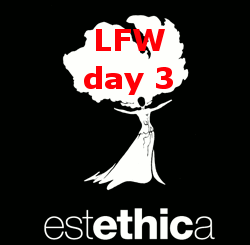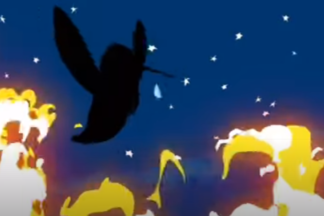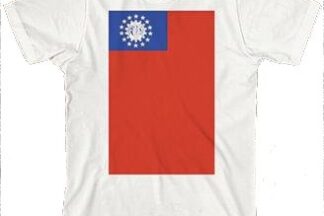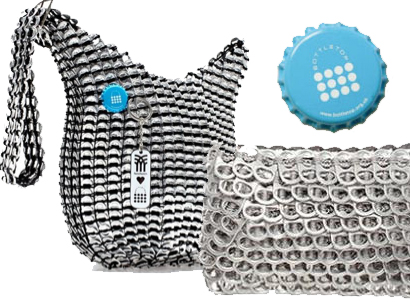London Fashion Week 02/2011 - Day 3: Sourcing ethically is all about knowledge. It's primarily about livelihoods and survival, beyond the 'Human-Rights factor'.
Anna Grindi was coveted dress maker from Tempio Pausania, a town in northern Sardinia. And enchanted by the possibility of cork for fashion. Her obsession lead to the development of cork fabrics that today are the foundations to her very successful company Suberis, turning over millions of Euros. A portrait.
The Manifesto of a Hummingbird: . 13 + 1 ways to make a stance for responsible business and leadership.
Cork is one of the most sustainable natural materials extant. Portugal supplies about two thirds of the world's cork, but the increased use of plastic bottle stoppers for wine, instead of cork, poses a threat to the country's industry. This post presents some data around cork and describes the bigger picture. The follow up post will look at how innovative uses of cork find application in fashion.
Cork is one of the most sustainable natural materials extant. Portugal supplies about two thirds of the world's cork, but the industry has been under pressure in the past few decades. This post shows how innovative companies have found application for the material in the realm of fashion.
The design stage is usually the longest, most expensive and riskiest part of the chain. Additionally, research has shown that at least an estimated 80% of a product's environmental (and to a lesser degree also social) impact is locked at the design stage into a product. By integrating the product design with the supply chain, companies can compress non-value adding time and costs in their supply chains, increase responsiveness and mitigate supply chain risks – while simultaneously managing (improving) their sustainability performance without added costs or efforts.
Parents complain about the prices of school uniforms. Yet - are they also considering that too cheap a price may actually ... get them school uniforms for their children, made by children of that same age?
Interview with Shazia Saleem, a London-based couture fashion designer, who specialises in hand woven textiles & works in cooperation with Varanasi brocade hand weavers.
The coastal areas of Eastern Japan, while largely unaffected by the grade 9 earthquake from March 11th, 2011, was thoroughly washed away by the tsunami following the quake. Now that the recovery efforts are under way, also fashion companies and fashion related projects contribute their share. An overview of what is happening on the ground to-date.
During the former Soviet Union, Ukraine developed as one of the largest centres of textile industry, representing approximately 50% of the entire SU's textile industry. And even after the SU fell to pieces, the Ukraine for quite some time remained with its manufacturing power. So, what is the status quo today?
Since the moment that Burma's opposition Leader, Aung San Suu Ky, was released from her decade of house arrest it was clear: Nothing would remain the same.
Already early last year the Swedish Fast Fashion retailer H&M announced the placement of test orders for garments from Ethiopian and Kenyan suppliers. And they're not even the first ones: Retailers such as Tesco and Walmart seem to have gone down that lane already some time ago.
The news is fresh. And it could potentially be some of the most interesting news in the present for cost savvy – and patience as well as unscrupulous investors looking for a somewhat different opportunity: High risk, yes, but potentially with outrageously high returns.
Things in North Korea, secluded for the last 60 years, are undoubtedly changing.
Nigeria’s textile industry used to be – possibly still is – the African continent’s third largest after that of Egypt and South Africa. For one reason or another, the first two are fairly well established among brands of all colours and types as potential – and actual – sourcing destinations. Egyptian cotton is well renowned, as is their industry for jersey goods. Also ‘Made in South Africa’ is not uncommonly found in clothing labels.
This free introductory, extensively researched guide to ethically sourcing fashion from India, aims at small(er) ethical designers during the first stage of their efforts.
Julius Walters of Stephen Walters & Sons is a ninth generation weaver of a family business founded 1720. This is the company that wove the silk for the Queen’s coronation robes and for Princess Diana’s wedding dress.
The developments in the British Midlands of the industrial revolution have coined the textiles industry possibly like no other.
It was is this area that we find the roots to the modern textile industry, including case studies that (nearly) could be dated from our modern times. From archives and historical records the industrial revolution left behind in the area, we can gain many an insight that will trigger a simple ‘déjà-vu’ when taking note of news about textile factories from the Far East that with regularity hit our headlines.
The more time I spend ‘doing sustainability’, i.e. being involved both as a professional as well as as an individual in cajoling, motivating, convincing and helping companies – and the individuals therein - to become ‘better citizens’, the more I realised that … actually, in would not be that hard to do better.
Or let me reformulate more accurately: it is equally hard as many other things in businesses.
In the briefest of time, Bottletop's iconic bags have not only made into the limelight of fashion weeks supported by VIP, but their business model and approach has earned the organisation a shortlisting for the Observer Ethical Awards 2012, the British 'Green Oscars'.
How expensive is fair labour really? What would need to change in the price to make this a reality at the consumer end of fast fashion? This article diggs through some research data that while answering these questions. In short: fair labour could be had for cheap.






